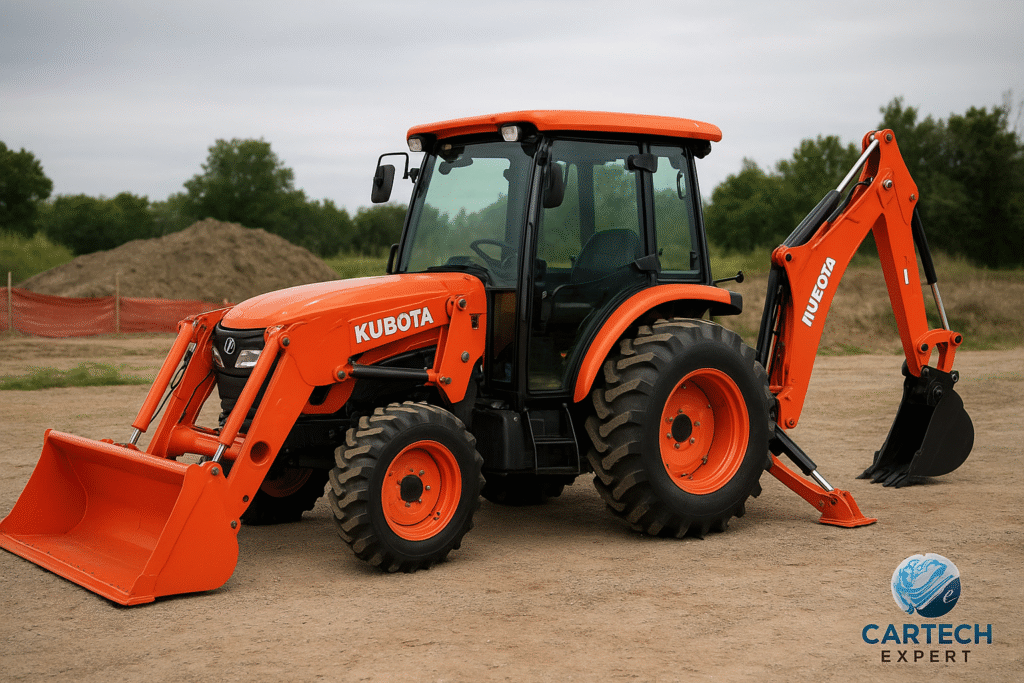Physical Address
Arthur Avenue , BrookField , ILLINOIS , 60513 , United State

When you think of heavy machinery that balances power, precision, and simplicity, Kubota often comes to mind. As a technician or enthusiast working in construction, agriculture, or diagnostics, you’ve probably encountered Kubota equipment that simply refuses to quit. This brand represents the perfect blend of Japanese craftsmanship and modern innovation — and its journey from a small foundry in Osaka to a global powerhouse is one worth exploring.
Kubota’s story begins in 1890, founded by Gonshiro Kubota in Osaka, Japan. Originally, the company focused on manufacturing cast iron pipes for water systems — a far cry from today’s lineup of excavators, tractors, and engines.
However, Kubota’s early success was built on three core principles that remain part of its DNA today:
By the 1920s, Kubota was already expanding into agricultural machinery, introducing products that transformed Japanese farming. This shift marked the beginning of its journey toward becoming a worldwide leader in utility and construction equipment.
In the 1960s, Kubota recognized a growing international demand for compact tractors and reliable construction machines. The company began exporting to North America and Europe — where its compact yet powerful machines quickly gained popularity among small farms and contractors.
By the 1980s, Kubota established subsidiaries in the United States, laying the foundation for Kubota Tractor Corporation (KTC). This move enabled the brand to develop equipment specifically tailored to regional needs, such as small-scale farms and light construction work.
As technology evolved, so did Kubota’s approach to engineering. Today, its machines integrate advanced diagnostics, telematics, and user-friendly control systems — giving you more insight and control in real time.
At the heart of Kubota’s identity lies the Japanese concept of Kaizen — continuous improvement. You can see this philosophy in every design choice, every machine iteration, and every manufacturing process.
Kubota is also leading sustainability efforts through:
This commitment ensures Kubota machinery not only performs efficiently but also aligns with the global push toward greener construction and farming practices.
Here’s a quick comparison between Kubota and other major heavy equipment manufacturers, highlighting where it stands out in today’s competitive market:
| Brand | Strengths | Focus Area | Global Reputation |
|---|---|---|---|
| Kubota | Compact machines, reliability, innovation | Agriculture & Construction | High in Asia, Europe, and North America |
| Caterpillar | Power, large-scale operations | Mining & Heavy Construction | Global dominance |
| Komatsu | Automation, AI-driven systems | Earthmoving & Mining | Global presence |
| Volvo | Safety, eco-efficiency | Construction & Roadwork | Strong in Europe & North America |
As we move deeper into 2025 and beyond, Kubota is heavily investing in automation, connectivity, and smart diagnostics. The brand envisions a future where every piece of machinery communicates seamlessly with operators, service tools, and the cloud.
Expect to see Kubota integrating AI-driven predictive maintenance systems, autonomous functionality in small-scale excavators, and expanded data-driven decision-making tools for technicians like you.
Interested in exploring more about the evolution of other heavy equipment leaders? Check out these in-depth brand histories:
Kubota’s journey showcases how precision, innovation, and dedication to improvement can transform a small company into a world-class manufacturer. Whether you’re repairing, diagnosing, or operating Kubota machinery, you’re part of a legacy defined by craftsmanship and trust.
To stay updated on the latest diagnostic trends and heavy equipment innovations, visit cartechexpert.com — and don’t forget to explore specialized tools and accessories at our store: store.cartechexpert.com.
Kubota stands out for its compact design, high reliability, and precision engineering, making it ideal for small to mid-sized projects.
Yes, most modern Kubota models integrate standard communication protocols, making them compatible with various professional diagnostic tools.
Yes. KubotaNOW and other digital monitoring systems allow you to track performance, maintenance, and usage remotely.
Kubota leads in low-emission engine design and continuously invests in electric and hybrid prototype development to reduce its carbon footprint.
